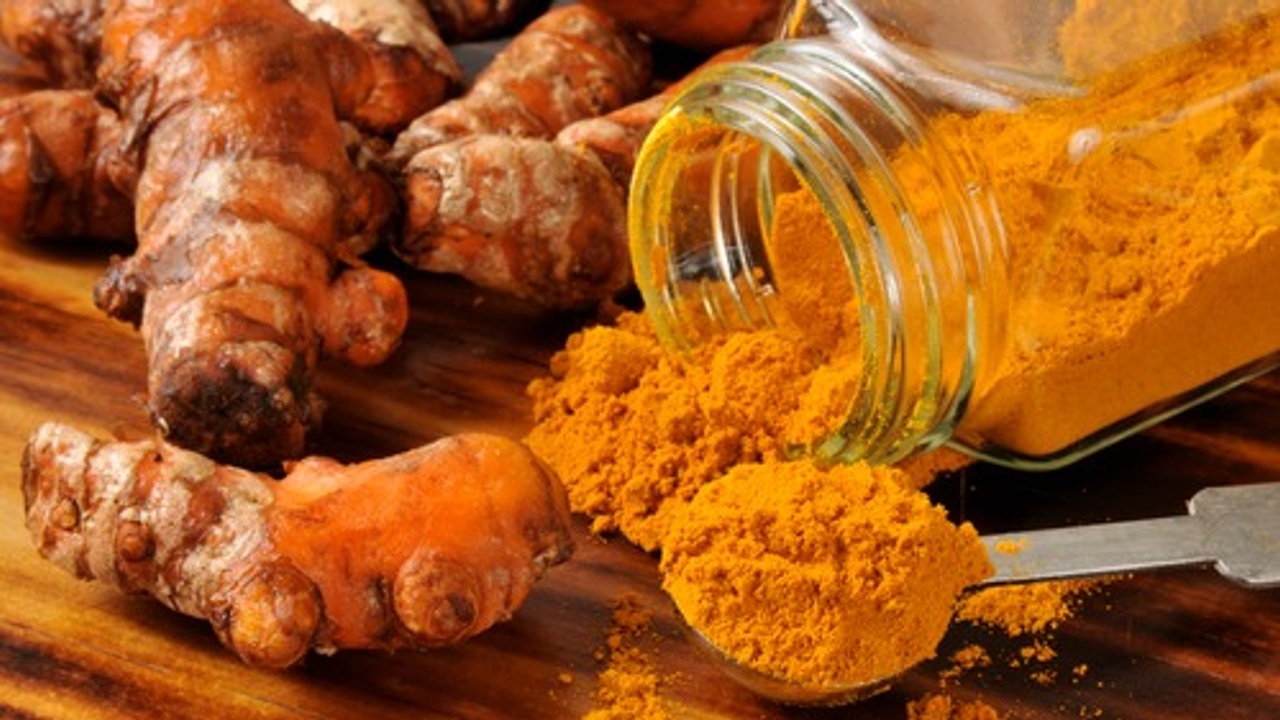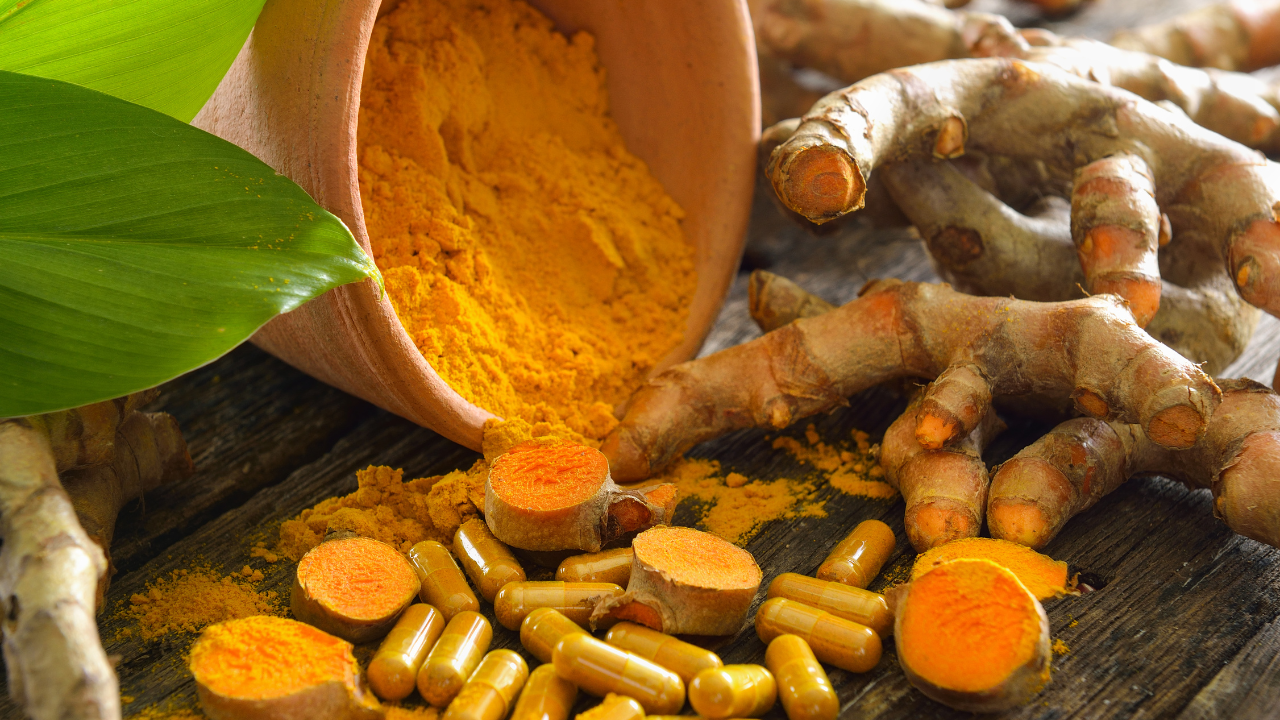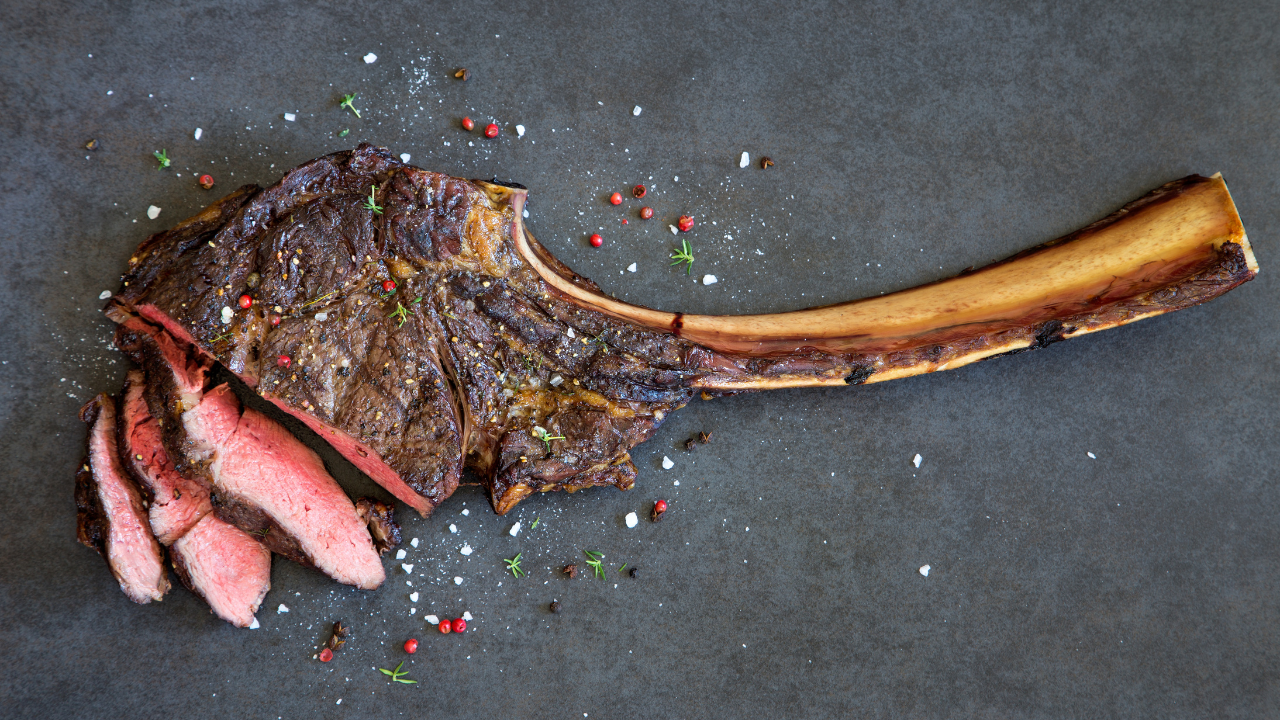Is Turmeric Good for Thyroid Thrivers?

You’ve probably heard about turmeric as a superfood or supplement, but is it worth consciously adding it to your thyroid-friendly diet? The answer is a resounding YES! Turmeric is more than just a vibrant yellow spice; it can be a game-changer for thyroid thrivers.
In this blog post, podcast episode, and YouTube video, we’ll explore the many reasons why turmeric deserves a place in your thyroid-friendly lifestyle and how to incorporate it effectively. You’ll also find links to recipes, expert tips, and my Easy Instant Golden Milk Mix to help you get started.
We'll cover:
-
The reported health benefits of turmeric.
-
Curcumin: The bioactive component of turmeric.
-
Is turmeric beneficial for Thyroid Thrivers?
-
3 ways to add more turmeric to your life.
-
Is occasionally cooking with turmeric enough to see benefits?
-
How to get the most benefit from cooking with turmeric.
-
Fresh vs. dried turmeric.
-
Thyroid-healthy turmeric recipe ideas.
Full disclosure: Some of the links in this post may be affiliate links. As an Amazon Associate, I earn from qualifying purchases. Purchasing a product using one of these links will support my work at no additional cost to you. Thank you for supporting my work!
Disclaimer: This content is for educational and informational purposes only. Always consult with your doctor or other qualified healthcare provider before making changes to your diet, health care, or exercise regimen.
Show Notes:
- FREE Thyroid-healthy Grocery Guide
- Complete blog post with links and recipes
- The Thyroid-Healthy Everyday Cookbook [10% OFF Code: THB10]
Podcast Links:
- Listen on the podcast page
- Listen/Subscribe on Apple
- Listen/Follow on Spotify
- Watch/Subscribe on YouTube
Reported Health Benefits of Turmeric
If olive oil is the Liquid Gold of the Mediterranean, turmeric is the Solid Gold of India. Known as Indian Saffron, turmeric’s strong yellow color infuses both flavor and vibrancy into dishes like curries, Moroccan stews, and Thai specialties. Sometimes it’s used as a natural additive to things like mustard, cheese, and butter to make them more yellow. I add a pinch or two to my chicken bone broth to give it a touch of color. But turmeric’s appeal goes far beyond its culinary uses—it has been celebrated for millennia as a powerful medicinal spice.
Turmeric’s health benefits are as vibrant as its color. It has been dubbed "culinary ibuprofen" due to its ability to combat inflammation. It’s also recommended for:
-
Heart health (including reducing arterial plaque associated with heart disease)
-
Gastrointestinal health
-
Brain health (including reducing brain plaque associated with Alzheimer’s).
-
Diabetes management (helping lower blood sugar levels).
This spice is a staple in Chinese medicine, where it’s used to treat dozens of ailments, from liver issues and respiratory problems to muscle and joint pain. It even has antiviral, antifungal, and antibacterial properties. However, it’s important to keep expectations realistic. While turmeric has many benefits, not all claims are supported by rigorous, gold-standard research.
Curcumin: The Bioactive Component of Turmeric
The key to turmeric’s powerful health benefits lies in its active compound, curcumin, a term sometimes used interchangeably in reference to turmeric and turmeric supplements. Curcumin is truly amazing stuff. And powerful. In studies, it has outperformed some pharmaceuticals!
Curcumin has been shown to:
-
Reduce inflammation
-
Act as an antioxidant
-
Support brain function
-
Aid in detoxification
However, curcumin is not easily absorbed by the body. To enhance its bioavailability you can use a few simple culinary strategies. When cooking with turmeric, pair it with:
-
Healthy fats (like coconut oil or ghee).
-
Black pepper (piperine boosts absorption by up to 2,000%).
-
Heat (cooking turmeric makes it more effective).
 Try this delicious Turmeric Hot Chocolate
Try this delicious Turmeric Hot Chocolate
Is Turmeric Beneficial for Thyroid Thrivers?
For those managing thyroid conditions like Hashimoto’s or Graves’ disease, turmeric can be a powerful ally. According to thyroid health expert Dr. Izabella Wentz, turmeric addresses key issues commonly faced by thyroid thrivers, including:
-
Healing the gut barrier (reducing leaky gut).
-
Reducing systemic inflammation in joints, muscle tissue, and the gut.
-
Improving brain health (reducing brain fog and improving oxygen intake).
-
Detoxifying heavy metals (supporting recovery from heavy metal toxicity).
-
Boosting mood (shown in studies to be as effective as Prozac for treating depression).
The science is clear: turmeric is a worthy addition to any thyroid-friendly menu.

3 Ways to Add More Turmeric to Your Life
- Supplementation: People take turmeric extract or curcumin in capsule form, and it is, in many cases, considered safe. However, it can have uncomfortable side effects and drug interactions, including risks for pregnant or nursing women. Consult with your trusted physician before taking a turmeric supplement (or any supplement).
- Drinking: You can drink turmeric in the form of an ancient Ayurvedic beverage called Golden Milk Tea. This is a middle-of-the-road way to achieve a substantial intake of the stuff without either taking a capsule or eating loads of curry. Check out my recipe Easy Instant Golden Milk Mix.
- Cooking: This is my favorite way to obtain the healing powers of turmeric. Because of its strong, pungent flavor, it’s used in small doses in cooking, which begs the next question:
Is Cooking with Turmeric Enough to See Benefits?
If you’re wondering whether adding those small, culinary “doses” of turmeric to your diet is enough to make a difference, here’s some food for thought:
A medical study entitled “The effect of curcumin (turmeric) on Alzheimer’s Disease” compared the rate of Alzheimer’s in curry-loving India versus the United States. Among adults aged 70-79, India’s rate of Alzheimer’s is 4.4 times lower!
This study went on to say that test subjects who ate curry on an occasional (less than 1x/month) or frequent (more than 1x/month) basis performed better on cognitive function tests than those who ate curry rarely or never.
Bottom Line: Yes, cooking with turmeric, even once a month, may benefit your health.
Interested in supplementation? Talk to your healthcare provider about whether or not turmeric/curcumin supplementation is right for you. This can provide a more clinical dosage and benefits, but turmeric isn't right for everyone and can interact with certain medications.
Further reading: Tuna: Is It Thyroid-Safe?
How Much Turmeric is in Curry Powder?
That depends. Turmeric is often the primary ingredient in curry powder, a blend of spices that can contain twenty or more ingredients. In creating a curry powder, turmeric serves as a base layer upon which to build all the other flavors in the curry powder. Its flavor profile is bittersweet and fruity with a subtle, ginger-like heat.
There are endless variations of curry powder recipes; some contain more turmeric than others. One way to make sure you are getting plenty of turmeric from your curry powder and a much more vibrant flavor is by making your own.
In this recipe for Curry Powder from Alton Brown, turmeric comprises nearly half of the spice blend. Other ingredients include cumin, cardamom, coriander, dry mustard, and cayenne. I would also add black pepper to Brown's formula, which increases the length of time curcumin remains in the body (i.e., its bioavailability).
You can also use store-bought curry powder and add extra turmeric powder and pepper to the dish to ensure you get adequate turmeric.
How Can I Get the Most Benefit from Cooking with Turmeric?
Once again, remember that turmeric's bioavailability—or absorbability—is somewhat low. It flushes right through our systems. To help your body absorb and retain more beneficial curcumin from turmeric, there are a few things you can do when cooking with it to increase the benefits:
- Add healthy fat (ghee, olive oil, avocado oil, coconut oil, etc.). Curcumin is fat-soluble.
- Add black pepper. The piperine found in pepper can increase the bioavailability of curcumin in humans by up to 2000%.
- Add heat. In other words, cook with it to increase solubility.

This Easy Instant Golden Milk is a fantastic way to incorporate more turmeric into your life.
Fresh vs. Dried Turmeric: Does it Matter?
In terms of flavor, the difference between fresh and dried turmeric is similar to the difference between fresh and dried ginger. Fresh turmeric root has a much brighter and more bold flavor. Dried turmeric is muted but still manages to infuse flavor when cooked with moisture of any kind.
Dried turmeric is also more convenient, easier to find, and easier to store than fresh turmeric root.
Rule of Thumb for fresh vs. dried turmeric:
1 inch fresh turmeric = 1 tablespoon freshly grated turmeric = 1 teaspoon ground turmeric
If you have access to both fresh and dried turmeric, you can experiment and decide which type of turmeric is best for which application. If you can find fresh turmeric, it’s worth a try. Otherwise, sticking with dried turmeric is just fine.
This Mild & Creamy Butterless 'Butter' Chicken is a scrumptious way to enjoy turmeric!
Thyroid-healthy Recipes Featuring Turmeric:
- Red Lentil Rainbow Soup
- Turmeric Hot Chocolate
- Salmon, Sweet Potato and Watercress Salad with Turmeric Cream
- AIP Lamb Hash with Carrot and Celery Root
- Easy Instant Golden Milk
- Chicken Bone Broth
- Mild and Creamy Butterless Butter Chicken (Low FODMAP)
The Bottom Line
Turmeric is truly a golden treasure for Thyroid Thrivers. Its benefits—from reducing inflammation and supporting gut health to boosting mood and brain function—are both extensive and compelling. Whether you choose to supplement, sip, or cook with turmeric, incorporating this vibrant spice into your daily routine is a delicious and easy way to support your thyroid health.
A Quick Reminder: If you’re considering turmeric as a supplement or in large culinary doses (rather than just occasional cooking in normal amounts), always consult your doctor first. While turmeric has incredible health benefits, it’s not suitable for everyone and may interact with certain medications.
I hope this has inspired you to get creative in the kitchen, embrace turmeric’s healing potential, and discover the power of what you choose to eat.
Happy healing and bon appetit!

P.S. Need more thyroid-friendly recipe inspiration? I’ve got you covered. My Thyroid-friendly Everyday eCookbook features over 50 quick and easy, thyroid-friendly recipes your whole family will love. To take a peek at what’s inside, CLICK HERE.
Subscribe to my free newsletter for fresh recipes & lifestyle tips, delivered weekly, and receive a free gift!
By submitting this form, you agree to receive ongoing updates from Hypothyroid Chef












